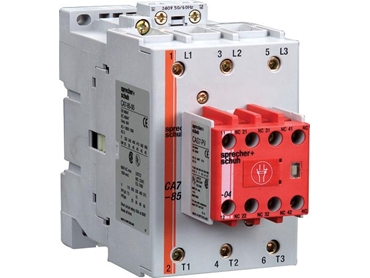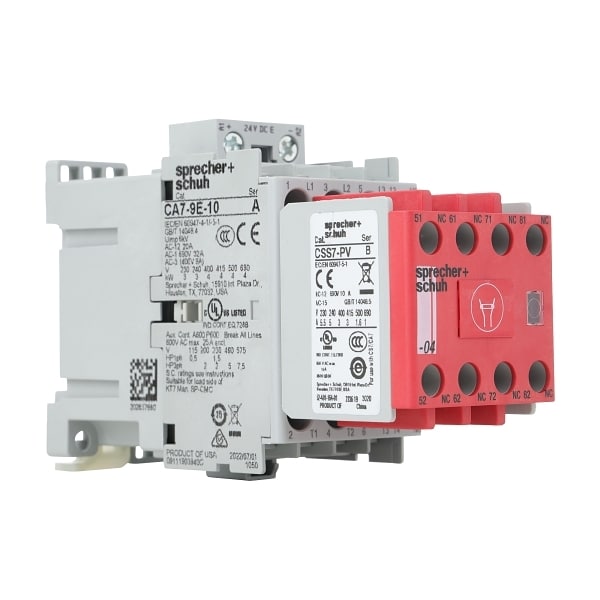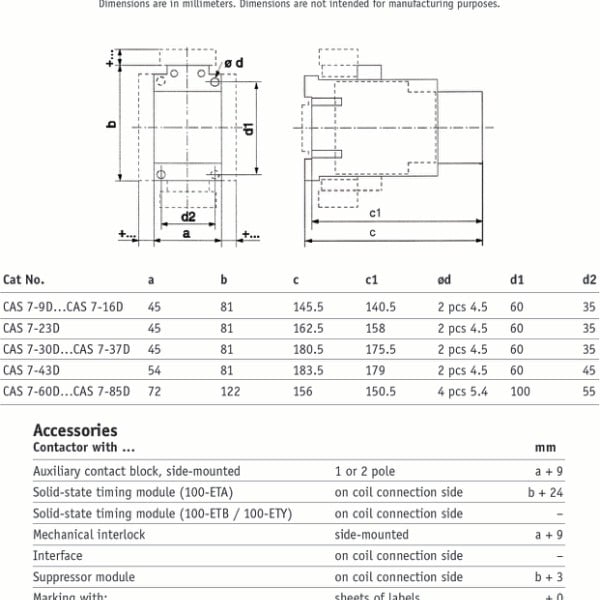
7
Contactors: The foundations of Safety Automation
A Brief Overview of Safety Contactors
Safety contactors are critical components in industrial automation and safety systems, designed to ensure the reliable disconnection of electrical power to machinery during emergencies or hazardous situations.
They are crucial for enhanced safety, preventing accidents and protecting personnel by ensuring machinery is properly de-energized during maintenance or emergencies, thereby reducing the risk of electrical shocks and mechanical injuries. They also help organizations comply with international safety regulations and standards, such as the Machinery Directive in Europe, which mandates specific safety requirements for industrial equipment. Additionally, safety contactors contribute to the overall reliability of safety systems; their fail-safe design ensures that even in the event of a fault, the machinery defaults to a safe state, preventing potential damage to equipment and production downtime.
In industrial automation, ensuring the safe and reliable operation of machinery is paramount. At the core of safety automation systems, Safety Contactors serve as essential components designed to disconnect electrical power during emergencies or hazardous conditions. Unlike standard contactors, these specialized devices incorporate fail-safe mechanisms that guarantee de-energization, preventing unintended machine startups and minimizing the risk of electrical hazards.
The importance of Automation Contactors extends beyond accident prevention; they also play a crucial role in compliance with stringent international safety regulations, such as the European Machinery Directive. With advanced features like mirror contacts and mechanically linked design, safety-enhanced contactors ensure that machinery defaults to a safe state even in the event of a fault, reducing potential downtime and equipment damage.
Solutions like the CAS Contactor series provide enhanced durability and reliability in high-risk environments, making them ideal for applications requiring consistent performance under demanding conditions. Additionally, industry-leading options such as the Sprecher Schuh Contactor offer robust safety functionality for industrial automation systems, further reinforcing workplace protection.
By integrating safety contactors into automated processes, industries can significantly improve workplace safety while optimizing operational efficiency, making these components foundational to any comprehensive safety automation strategy.
IMPORTANT FEATURES
Redundancy: Safety contactors often include redundant contacts to ensure fail-safe operation. If one set of contacts fails, the redundant set ensures the circuit is still broken, preventing accidental energization.
High Reliability: Designed to operate reliably under various conditions, safety contactors are built to meet stringent safety standards such as IEC 60947-4-1 and ISO 13849-1, ensuring their performance in critical applications.
Easy Identification: Many safety contactors are designed with distinctive markings or colors (such as red or yellow plates) to distinguish them from standard contactors, making them easily identifiable in control panels.
tYPES OF CONTACTORS
Mechanically Linked Contacts: The contacts within a safety contactor are mechanically linked, ensuring that if one contact fails (e.g., welds shut), the others will also remain open. This prevents partial operation and ensures a complete shutdown of the circuit.
Mirror Contacts: These provide a reliable indication of the contactor’s status (open or closed), essential for feedback in safety circuits. This feedback ensures that the control system accurately knows the state of the contactor and can take appropriate action if a fault is detected.
Auxiliary Contacts: Low-power auxiliary contacts are used to monitor the state of the main contacts. These are crucial for safety circuits that need to know if the main contacts have opened or closed properly.
Above: Sprecher + Schuh CAS7 Safety Contactor (LHS). Dimensional Diagram (RHS)
To learn more about above, click here
How do safety contactors work?
A safety contactor operates as a switch that controls the flow of electrical power to machinery or equipment. Its design ensures that it can reliably disconnect power in emergency or hazardous situations. Here’s a breakdown of how a safety contactor works:
CONTROL CIRCUIT
The safety contactor is part of a control circuit that includes safety devices like emergency stop buttons, safety interlocks, and safety relays. These devices send signals to the contactor to either engage or disengage.
ELECTROMAGNETIC COIL
At the heart of the contactor is an electromagnetic coil. When the control circuit sends a signal, it energizes this coil, creating a magnetic field.
MOVING CONTACTS
The magnetic field generated by the coil pulls in the moving contacts (or armature) of the contactor. These moving contacts are typically spring-loaded and designed to either complete or break the main power circuit.
MAIN CONTACTS
When the moving contacts are pulled in, they connect with the main contacts, allowing electrical current to flow through the contactor and to the connected machinery. Conversely, when the coil is de-energized, the spring mechanism pulls the moving contacts away from the main contacts, breaking the circuit and stopping the flow of power.
FAIL-SAFE MECHANISM
Safety contactors often include a fail-safe mechanism, ensuring that in the event of a power failure or fault, the contacts default to the open position, thus cutting off power to the machinery. This prevents accidental startups and ensures the machinery remains in a safe state.
AUXILIARY CONTACTS
Many safety contactors also have auxiliary contacts that can be used for signalling and feedback purposes. These auxiliary contacts provide information on the status of the main contacts (open or closed) to other parts of the safety system, such as control panels or monitoring systems.
MANUAL OVERRIDE
Some safety contactors include a manual override or reset mechanism, allowing maintenance personnel to manually disengage or reset the contactor after addressing the safety issue.
The safety contactor is part of a control circuit that includes safety devices like emergency stop buttons, safety interlocks, and safety relays. These devices send signals to the contactor to either engage or disengage.
At the heart of the contactor is an electromagnetic coil. When the control circuit sends a signal, it energizes this coil, creating a magnetic field.
The magnetic field generated by the coil pulls in the moving contacts (or armature) of the contactor. These moving contacts are typically spring-loaded and designed to either complete or break the main power circuit.
When the moving contacts are pulled in, they connect with the main contacts, allowing electrical current to flow through the contactor and to the connected machinery. Conversely, when the coil is de-energized, the spring mechanism pulls the moving contacts away from the main contacts, breaking the circuit and stopping the flow of power.
Safety contactors often include a fail-safe mechanism, ensuring that in the event of a power failure or fault, the contacts default to the open position, thus cutting off power to the machinery. This prevents accidental startups and ensures the machinery remains in a safe state.
Many safety contactors also have auxiliary contacts that can be used for signalling and feedback purposes. These auxiliary contacts provide information on the status of the main contacts (open or closed) to other parts of the safety system, such as control panels or monitoring systems.
Some safety contactors include a manual override or reset mechanism, allowing maintenance personnel to manually disengage or reset the contactor after addressing the safety issue.
Contactor Applications
Safety contactors are used in a variety of applications where ensuring a reliable and safe power disconnection is critical. These applications include emergency stop circuits, where they ensure that pressing an emergency stop button effectively cuts power to machinery; safety interlock systems, where they work with safety interlock devices on machine guards and access doors to prevent machine operation when guards are not properly closed; and automated manufacturing systems, where they control power to robotics and other automated equipment, ensuring safe shutdowns during malfunctions or maintenance.
In summary, safety contactors are vital for maintaining safe and compliant industrial environments. Their specialized features and design ensure that they can reliably interrupt power and provide feedback in safety-critical applications, significantly enhancing workplace safety and equipment protection. For further details on safety contactors, you can explore resources from Venus Automation.
Click to view our product range


